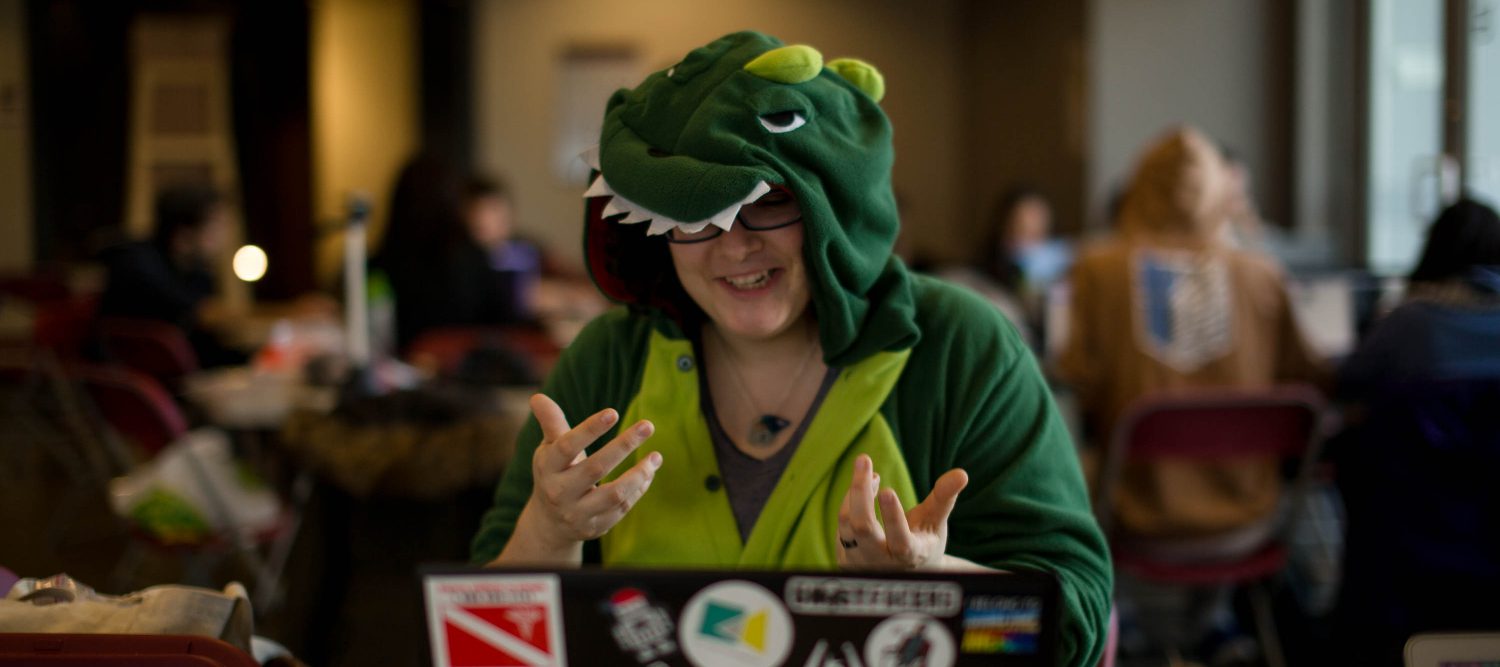I’m tired. Exhausted, in fact.
But I’m also energized, renewed, re-invigourated. For all of the ways that Ars Electronica was alienating, the Queerness and Games conference, which I co-organized and which happened this weekend at Concordia with the help of TAG and Milieux, made me feel like a part of a community.
One of our keynotes, Mattie Brice, talked about finding inspiration in performance arts, in the Happenings of the sixties, and, in its own way, I think QGCon is a Happening. It’s a temporary space where the usual rules are in some way suspended. It’s a space of caring, softness, kindness and vulnerability.
I’m not too sure exactly what I expected from the event, but it wasn’t exactly this. I had a great time at the last QGCon in 2017, but this time, maybe because I was closer to the event, it felt like there was a real, tangible presence of…I don’t even know what to call it… Hopefulness? Goodwill? permeating the space.
Organizing the event took a great deal of energy and labour, and I had to take on a lot as one of the local organizers. I wish I had been able to get more rest.
But nevertheless, while before I wanted to make a game about alienation, I think I want to make a game about feeling alienated and finding others who mitigate that feeling.
I’ve still got to sit down and design this project, but ideas are forming in my mind.
Rather than trying to find others for competitive reasons, maybe this can be a game about trying to find others so that you can be reunited, so that you can find community and hope in each other.
I’m reminded of a game that we showed at Princess of Arcade called Secret Agent Party. That’s a game that requires a lot of players in a contained space. I wonder how I can make this game playtestable or workable with very few people present or very many people. Maybe I need to narrow the scope.
Maybe static objects can also be people in some version of the game and give you info, but in other versions, the static objects are being worn and carried by others. So that, if there are only a few players, the story is filled in from static objects that stand in as people with histories (thinking of the programs you find in Transistor), but in a version with more players, those objects can then be on players who are also scanning you.
Thinking about the themes of Time Travel that I was working with, maybe it makes sense for there to be echoes or traces of people even if the people themselves aren’t always visible.
Well, just some design thoughts inspired by QGCon and sleep deprivation (please don’t worry — I’ve slept two solid 10 hour blocks since QGCon or more, even if I am still tired).
